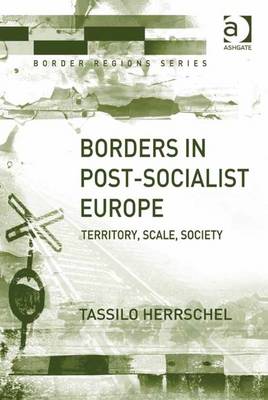Border Regions
3 total works
Borderscaping: Imaginations and Practices of Border Making
Using the borderscapes concept, this book offers an approach to border studies that expresses the multilevel complexity of borders, from the geopolitical to social practice and cultural production at and across the border. Accordingly, it encourages a productive understanding of the processual, de-territorialized and dispersed nature of borders and their ensuring regimes in the era of globalization and transnational flows as well as showcasing border research as an interdisciplinary field with its own academic standing.
Contemporary bordering processes and practices are examined through the borderscapes lens to uncover important connections between borders as a `challenge' to national (and EU) policies and borders as potential elements of political innovation through conceptual (re-)framings of social, political, economic and cultural spaces. The authors offer a nuanced and critical re-reading and understanding of the border not as an entity to be taken for granted, but as a place of investigation and as a resource in terms of the construction of novel (geo)political imaginations, social and spatial imaginaries and cultural images. In so doing, they suggest that rethinking borders means deconstructing the interweaving between political practices of inclusion-exclusion and the images created to support and communicate them on the cultural level by Western territorialist modernity. The result is a book that proposes a wandering through a constellation of bordering policies, discourses, practices and images to open new possibilities for thinking, mapping, acting and living borders under contemporary globalization.
'Borders' have attracted considerable attention in public and academic debates in light of the impact of globalisation and, in Europe, the end of the divisions of the Cold War era. Instead, being inside or outside of the EU has become a major paradigmatic divide between claimed 'spheres of influence' by 'Brussels' and 'Moscow' respectively. In the aftermath of the end of communism, established certainties no longer seemed to apply. And this included many of the borders within the former eastern Bloc, with some losing their relevance, while others re-assert themselves.
As its particular contribution, this book adopts a symbiotic approach to the analysis of borders, drawing on a political-economy perspective, while also recognising the importance of the socio-cultural dimension as found in 'border studies'. This seeks to do greater justice to the complex, composite nature of borders as geo-political, state-legal and cultural-historic constructs in both theory and practice. In addition, the book's approach stretches across spatial scales to capture the multi-level nature of borders. The first part of the book presents the conceptual framework as it sets out to embrace this multi-faceted, multi-layered nature of borders. In the second part, case studies from north-central Europe, including the Baltic Sea Region, exemplify the complexity of borders in the context of post-socialist transformation and continuing EU-isation.
While moving across borders has been made easier for some in Russia in recent years, for others, physical as well as socio-cultural borders are proving to be more and more difficult to cross. Tackling the differences between the ways in which official discourses construct borders and the ways people who live there experience them in their everyday lives, this book uses innovative theoretical approaches and empirical work with young North Caucasian migrants to explore issues of identity, citizenship, exclusion and belonging.
The Chechen war, terrorist attacks and confrontations between Caucasian migrants and local residents have served as touchstones for intense public debates about who belongs in Russian society and who does not. Young people of North Caucasian origin are experiencing the effects of such debates as they learn to negotiate and maintain their identities in an environment in which they are defined as a threat to national security whilst simultaneously being pressured to align with core civic values of the state. This book reflects on the notion that the cultural borders, which define civic liberties and people's right to belong, are increasingly being defined within society, and not by the external borders of states.


